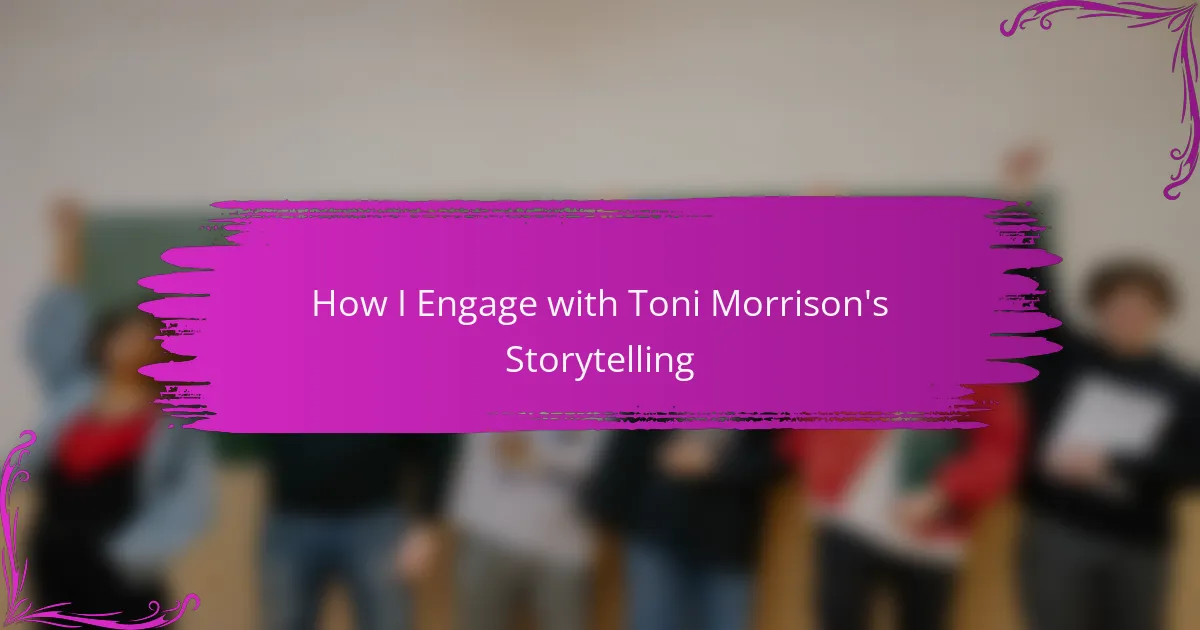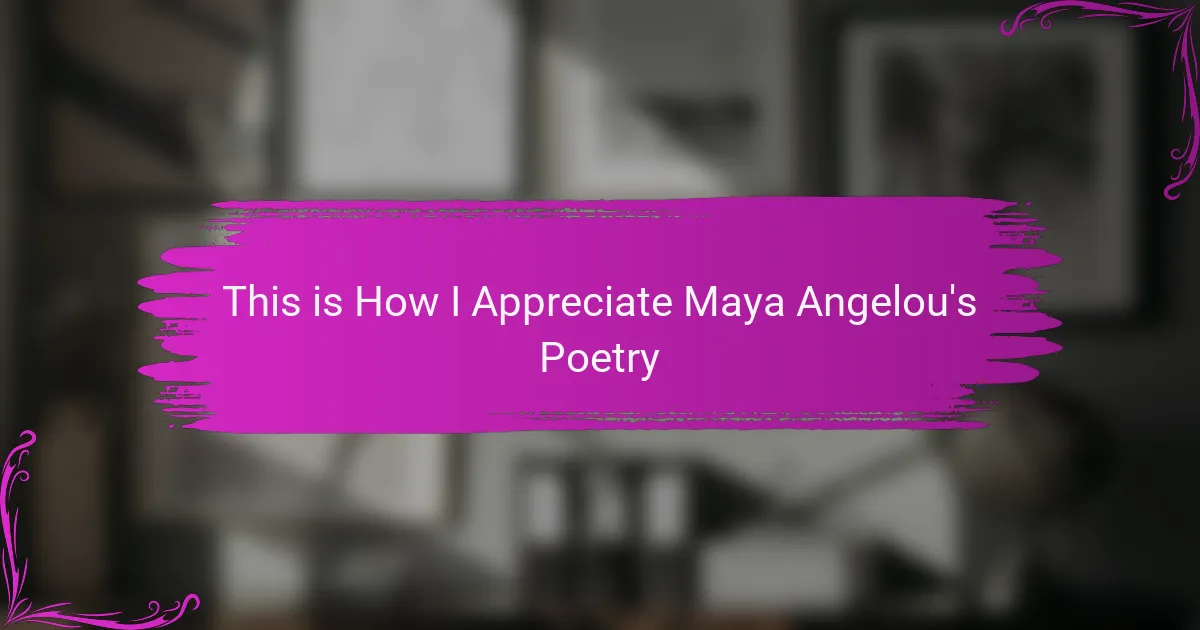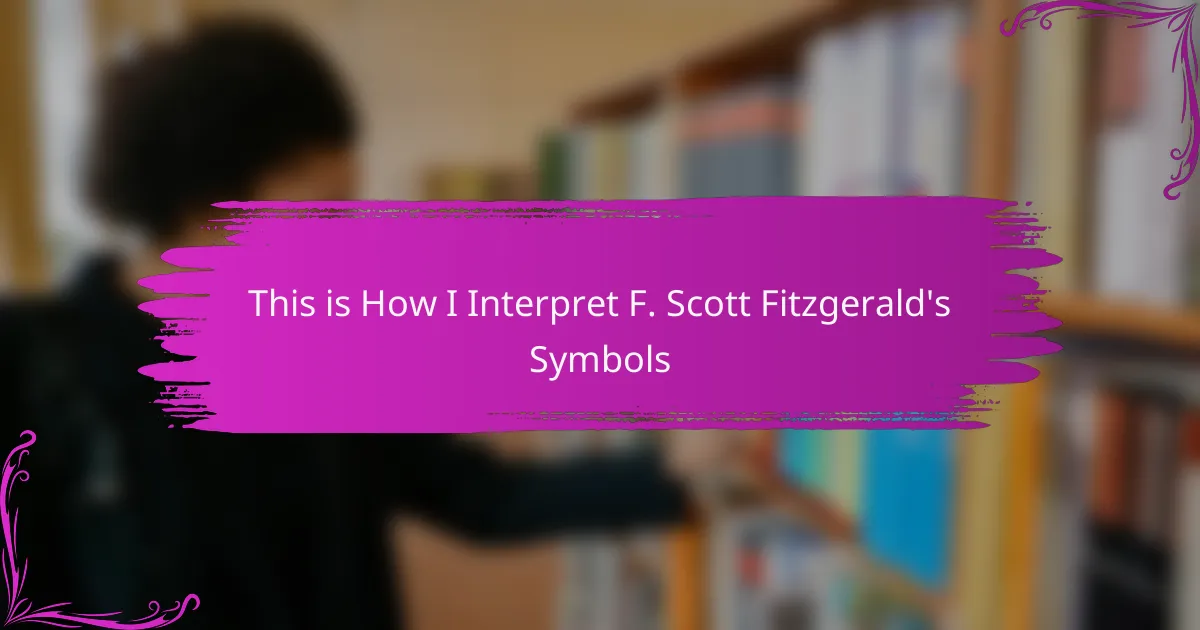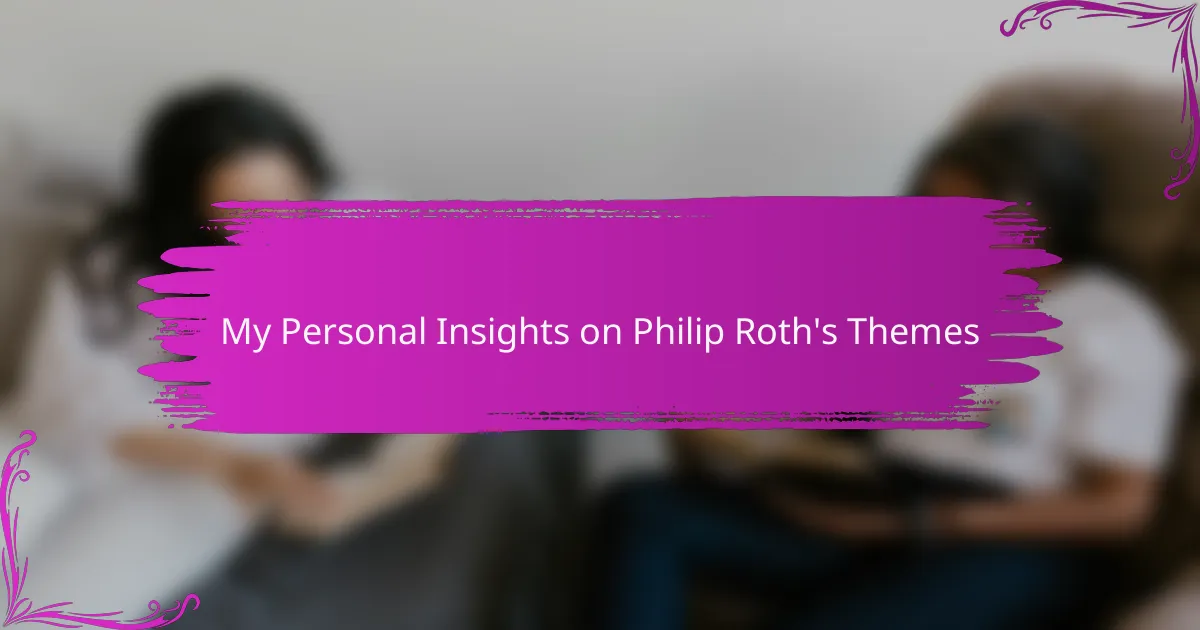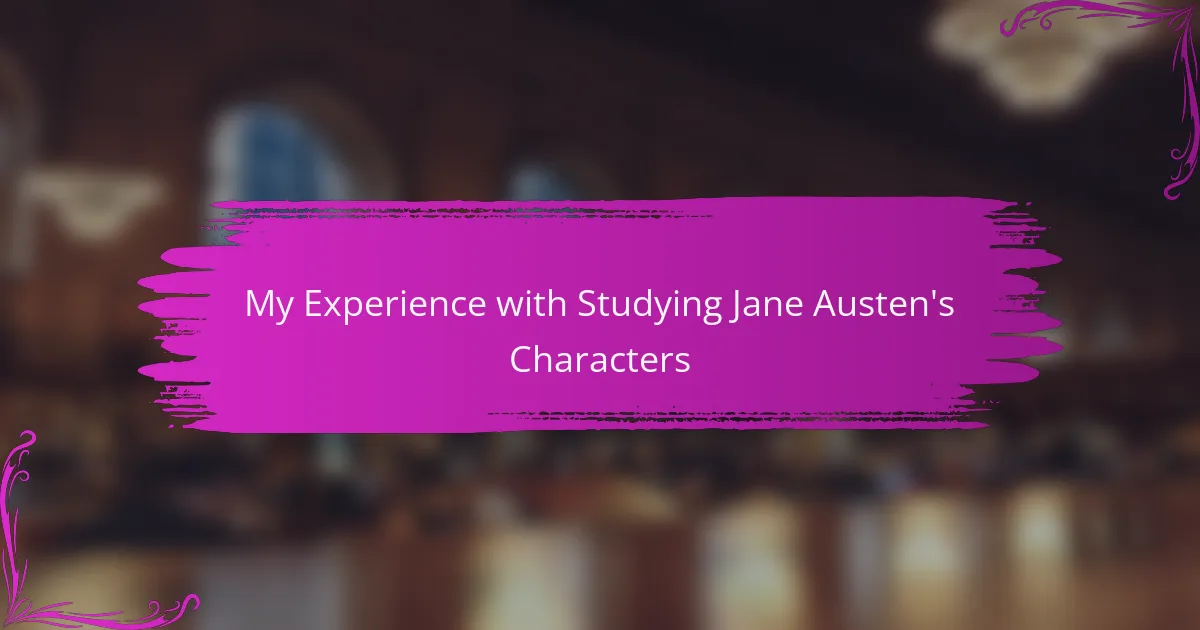Key takeaways
- Toni Morrison’s literature explores complex themes of identity, race, and community, fostering deep emotional connections and empathy among readers.
- Her narratives are rich with historical context, illustrating how the past influences present identities and relationships.
- Morrison’s innovative storytelling techniques challenge conventional forms, encouraging critical reflection on societal issues.
- Engaging classroom activities, such as role-playing and visual projects, enhance understanding of her works and their themes.
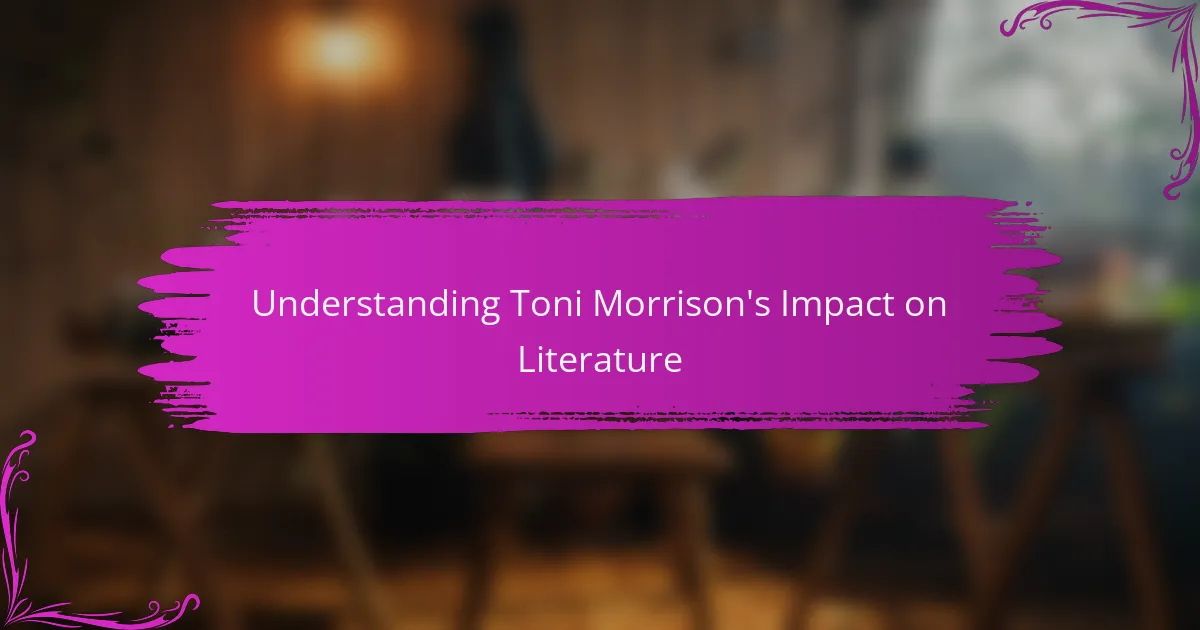
Understanding Toni Morrison’s Impact on Literature
Toni Morrison’s impact on literature is profound and multifaceted. When I first delved into her work, I was struck by her ability to weave intricate narratives that illuminate the African American experience. Her storytelling transcends mere entertainment; it fosters a deep understanding of identity, race, and the human condition. Reading “Beloved” for the first time felt like stepping into a rich tapestry of historical and emotional threads that challenged my perceptions and ignited my empathy.
Morrison’s novels compel readers to confront challenging themes, encouraging a level of introspection that few authors achieve. I recall being particularly moved by her exploration of memory in “Song of Solomon,” where the characters’ journeys intertwine with broader social histories. It made me reflect on my own family’s story and the weight of past lives, reinforcing the idea that literature can be a powerful means of connection and understanding.
- Morrison’s emphasis on the African American experience brings marginalized voices to the forefront.
- Her narratives often explore themes of identity, community, and historical trauma.
- The emotional depth of her characters fosters empathy and deeper self-reflection among readers.
- Morrison’s innovative use of language and structure challenges traditional storytelling forms.
- Her work has inspired countless writers and has become essential reading in literature curricula around the world.
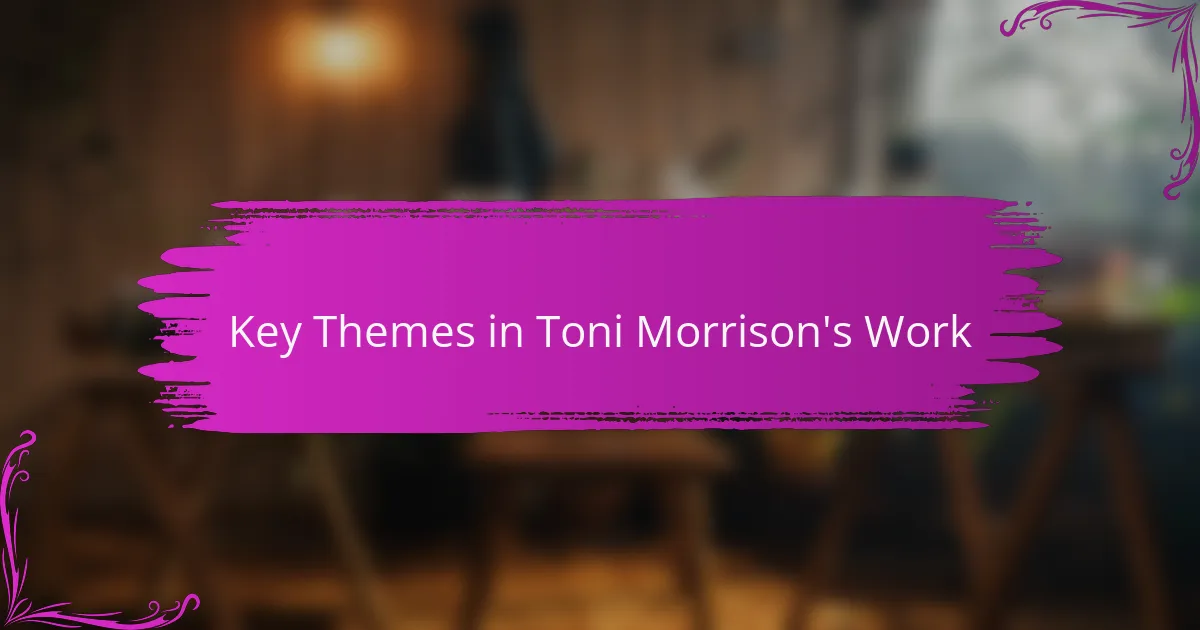
Key Themes in Toni Morrison’s Work
Toni Morrison’s storytelling is rich with themes that resonate deeply with the human experience. For me, her exploration of identity, particularly the nuances of race and gender, is incredibly impactful. I recall the first time I read “Beloved” and felt overwhelmed by the weight of history and its haunting presence in the characters’ lives. It sparked reflections on how our past shapes who we are today, and I found myself questioning my own identity through Morrison’s lens.
Another significant theme in her work is the strength of community and the bonds between individuals. Morrison illustrates how love and shared pain can create resilient connections, even in the face of adversity. When I read “Sula,” I was particularly struck by the complexity of friendship and forgiveness. It reminded me of my own friendships, which sometimes feel like a mirror reflecting both light and shadow.
- Identity and race – Morrison delves into the complexities of personal and cultural identity, particularly within the Black community.
- The impact of history – She masterfully weaves historical context into her narratives, demonstrating how the past influences the present.
- Community and relationships – Her stories emphasize the importance of relationships, exploring love, friendship, and the community’s role in shaping individuals.
- Gender dynamics – Morrison often examines the experiences of women and their struggles, creating powerful representations of feminine strength and resilience.
- Memory and trauma – Themes of memory, both personal and collective, emerge prominently, exploring how trauma can affect generations.
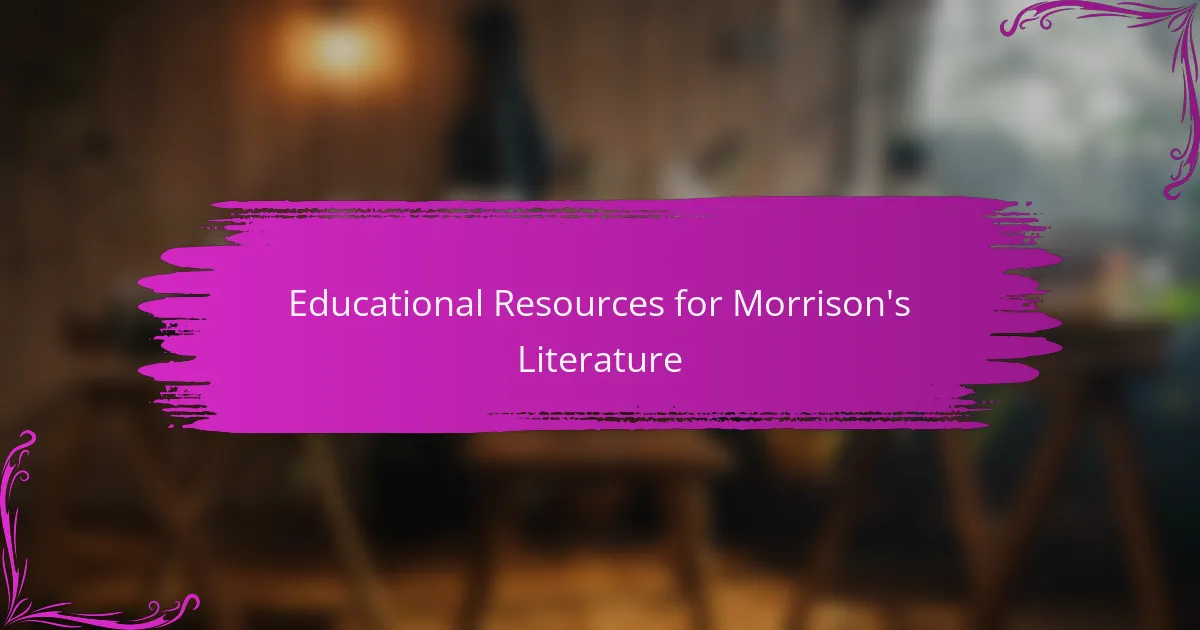
Educational Resources for Morrison’s Literature
Finding the right educational resources for Toni Morrison’s literature can really enhance the reading experience. For instance, I often recommend thematic discussion guides that dive deep into her key topics like identity and historical trauma. These guides not only help frame the discussions but also encourage students to reflect on their own lives, providing insights that are both personal and profound.
Another fantastic resource is literary analysis essays that explore the unique structure and language of her works. When I looked at a breakdown of “Song of Solomon,” I was fascinated by how Morrison’s innovative style challenges conventional storytelling. It’s like holding a mirror to my own analytical skills and asking me to think critically about how stories are told and received.
Additionally, group activities centered around Morrison’s novels can foster engaging discussions. I remember in a classroom setting where we analyzed character dynamics in “Sula,” and it prompted a rich conversation about forgiveness and friendship among peers. Have you ever considered how literature can open up such candid discussions about our own relationships? It’s experiences like these that highlight the lasting impact of Morrison’s storytelling.
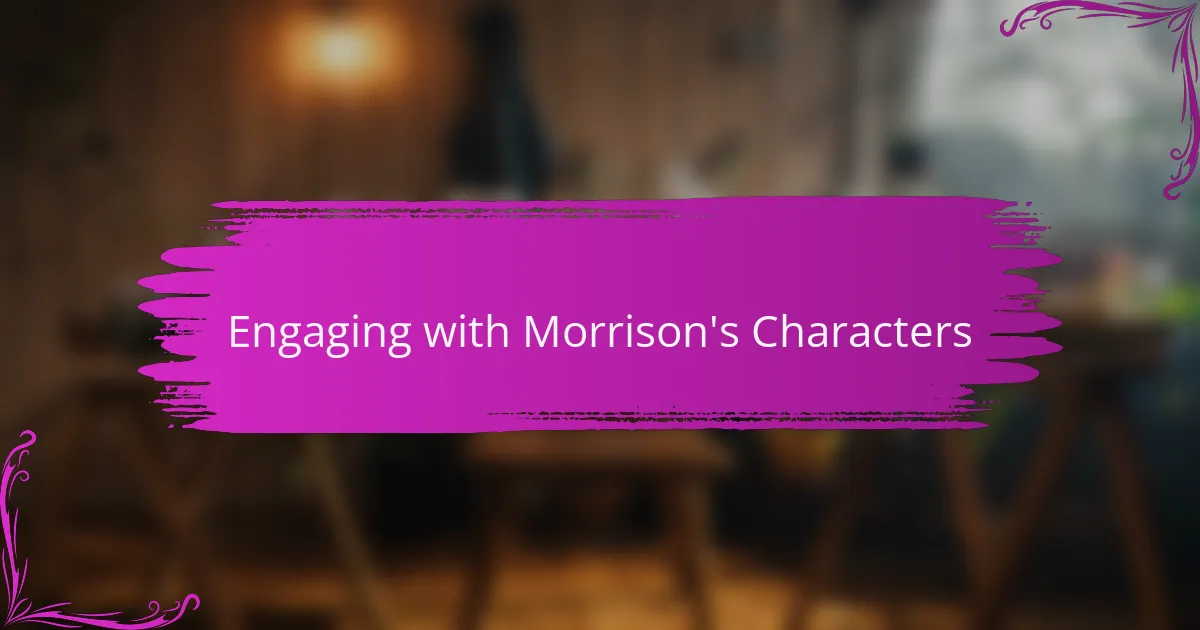
Engaging with Morrison’s Characters
Engaging with Morrison’s characters is like stepping into a mirror where I see reflections of both the familiar and the unfamiliar. When I read “Beloved,” the emotional journey of Sethe left an indelible mark on my heart. I found myself grappling with her choices, questioning what I might do in such circumstances. How do we reconcile love with sacrifice? It’s a profound exploration that only Morrison can illuminate.
Each character she crafts is layered with complexities that make them feel achingly real. Take Milkman Dead from “Song of Solomon,” for instance. His quest for identity resonated with my own experiences of self-discovery. I remember pondering the weight of legacy and how it shapes us. Morrison expertly invites us to sit with these characters, urging us to reflect on our own truth and histories. Don’t you think we all share a common thread of seeking our place in a world that often feels chaotic?
What truly captures my engagement is Morrison’s ability to evoke empathy through her characters’ struggles. In “Sula,” I was struck by the rawness of friendship and the choices that test it. Their dynamic reminded me of my own relationships, where love and hurt coexist in complex ways. How often do we consider the depth of our connections? It’s a powerful reminder that Morrison’s characters aren’t just fictional; they echo the human experience, pushing us to confront uncomfortable truths about ourselves and society.
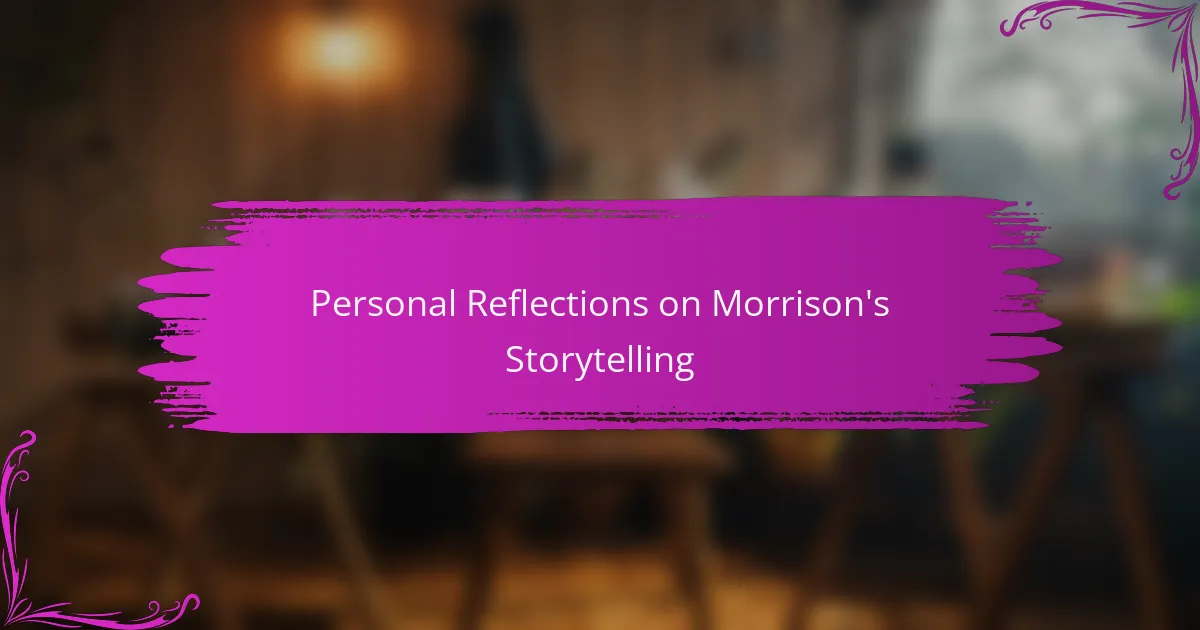
Personal Reflections on Morrison’s Storytelling
Toni Morrison’s storytelling deeply resonates with me on numerous levels. Her ability to weave complex characters with rich, emotional narratives often reminds me of my own experiences in grappling with identity and community. I vividly recall reading “Beloved” for the first time; it was as though Morrison held a mirror to my thoughts, revealing the struggles and joys of the human experience.
The themes she explores, such as love, loss, and the quest for belonging, evoke strong feelings that linger long after I close the book. I distinctly remember feeling a profound connection to Sethe’s journey, reflecting on the sacrifices made in the name of love. Each time I revisit her work, I find myself uncovering new layers that speak to my own life, highlighting the timeless relevance of her voice.
- Morrison’s characters often grapple with the weight of history, which encourages me to reflect on my own past.
- Her lyrical prose immerses me in a world of sensibility, making me acutely aware of the beauty in pain.
- Each story she tells serves as a reminder of the resilience of the human spirit, inspiring me to face challenges with courage.
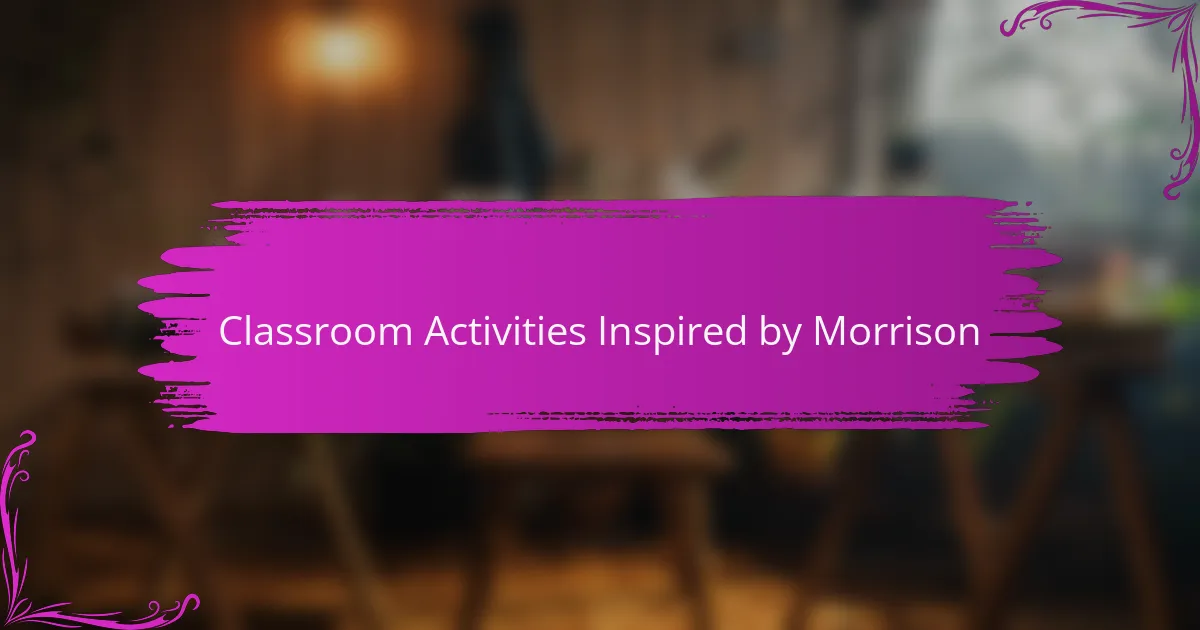
Classroom Activities Inspired by Morrison
When introducing Toni Morrison’s storytelling in the classroom, I find that hands-on activities truly bring her themes to life. For instance, students could participate in character role-playing, where they pick a character from one of her novels and act out a pivotal scene. This not only deepens their understanding but also allows them to experience the emotional weight of Morrison’s narratives.
Another engaging idea is to create visual art projects based on the motifs present in her works. I remember a project where my students created collages reflecting the themes of identity and community found in “Song of Solomon.” It was incredible to see how they interpreted Morrison’s messages through their artwork, sparking discussions that enriched our understanding of the text.
Here are some classroom activities inspired by Morrison’s storytelling:
-
Character Role-Play: Students select characters and reenact key scenes for deeper emotional engagement.
-
Theme Collages: Create visual representations of themes like identity, community, or memory from one of Morrison’s novels.
-
Letter Writing: Have students write letters from one character to another, exploring their motives and feelings.
-
Poetry Assignment: Students can write poems inspired by Morrison’s prose, mimicking her style and the emotions she evokes.
-
Multi-Media Presentations: Share interpretations of her novels through videos, slideshows, or digital storytelling platforms.
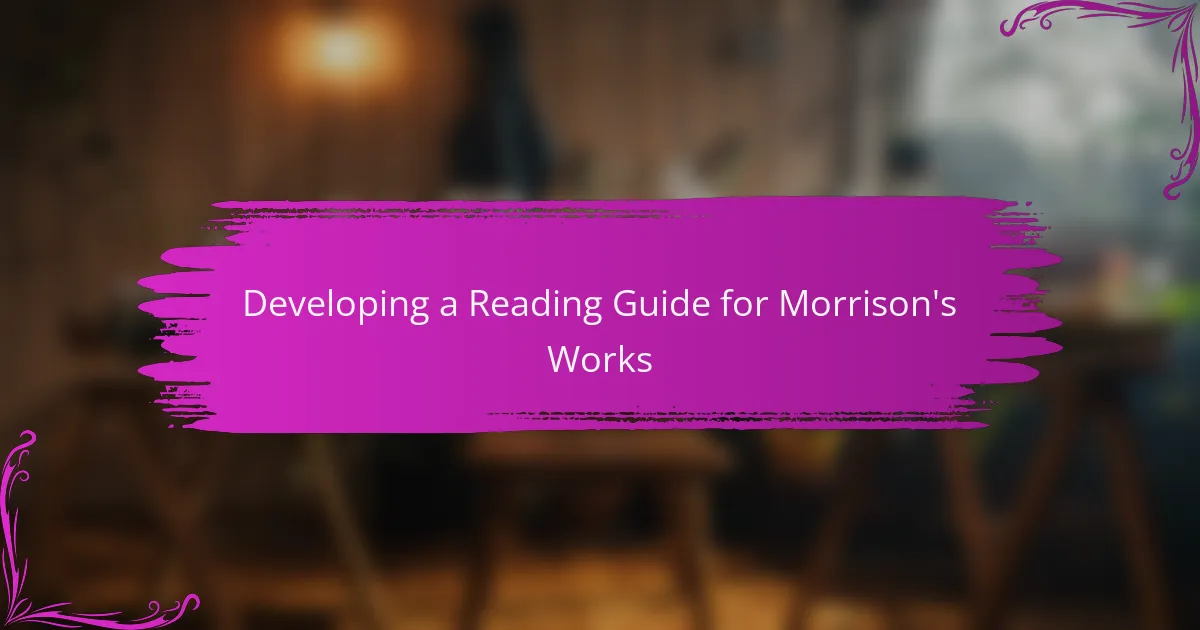
Developing a Reading Guide for Morrison’s Works
Developing a reading guide for Toni Morrison’s works can truly elevate the experience of engaging with her profound narratives. I remember poring over a guide that focused on the context of “Beloved,” which helped me grasp the haunting history behind the characters. It deepened my appreciation for the intricacies of memory and trauma that Morrison masterfully weaves into her stories. How much richer is our reading when we have a framework to connect those historical threads to our present understanding?
One effective approach is to highlight key themes and provide discussion questions that invite readers to reflect on their own lives. I once facilitated a group discussion around the theme of identity in “Song of Solomon,” and the insights shared were both eye-opening and deeply personal. It made me realize how Morrison’s exploration of heritage and self-discovery resonates universally, pulling us into conversations about our own journeys. Wouldn’t it be fascinating to see how different readers interpret these themes based on their unique experiences?
Additionally, I find that incorporating multimedia resources enhances the guide’s effectiveness. For instance, pairing excerpts from her novels with relevant literary criticism or video interviews can create a multifaceted understanding of her works. When I watched a documentary about Morrison, it illuminated her creative process and gave me a newfound appreciation for her language. Such resources can enrich the reading experience, encouraging deeper engagement with the text and inviting readers to explore the layers of meaning that Morrison so artfully crafts.
